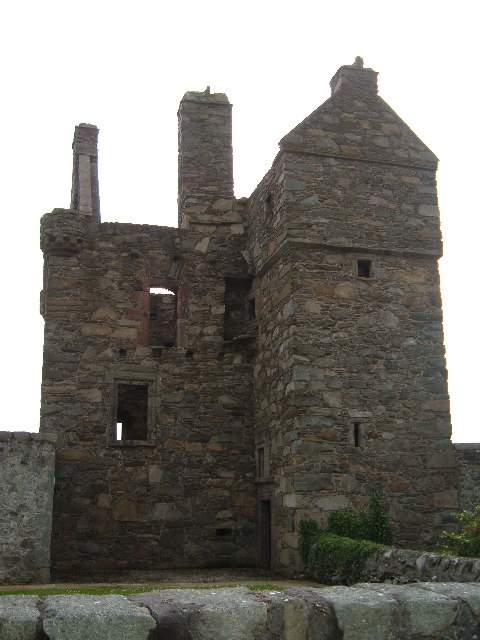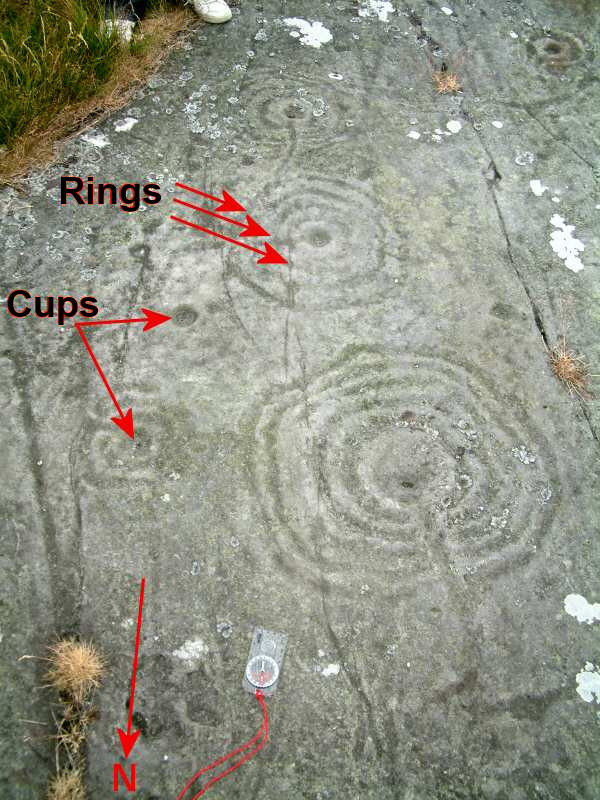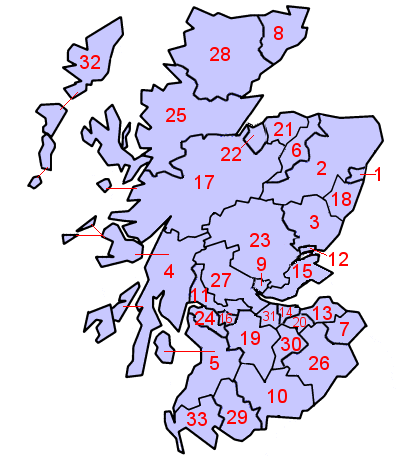|
Kirkmabreck
Kirkmabreck is a civil parish in the historic county of Kirkcudbrightshire in the Dumfries and Galloway council area, Scotland. Situated in the historic Stewartry of Kirkcudbright, and centred on the small town of Creetown on the east bank of the River Cree, it stretches north to the parishes of Minnigaff and Girthon, and west to Anwoth. Kirkmabreck also includes the small settlement of Carsluith, dominated by the eponymous castle which is in the care of Historic Scotland. It covers approximately 25,000 acres. Kirkmabreck was one of two parishes from Kirkcudbrightshire which were included in the Wigtown District which existed from 1975 to 1996, and as such forms part of the Wigtown lieutenancy area rather than the Stewartry of Kirkcudbright lieutenancy. Apart from Carsluith Castle, the other antiquities of note in the parish are at Cairnholy, also managed by Historic Scotland, the stone circle at Glenquicken and cup and ring mark Cup and ring marks or cup marks are a ... [...More Info...] [...Related Items...] OR: [Wikipedia] [Google] [Baidu] |
Stewartry Of Kirkcudbright
Kirkcudbrightshire ( ) or the County of Kirkcudbright or the Stewartry of Kirkcudbright is one of the historic counties of Scotland, covering an area in the south-west of the country. Until 1975, Kirkcudbrightshire was an administrative county used for local government. Since 1975, the area has formed part of Dumfries and Galloway for local government purposes. Kirkcudbrightshire continues to be used as a registration county for land registration. A lower-tier district called Stewartry covered the majority of the historic county from 1975 to 1996. The area of Stewartry district is still used as a lieutenancy area. Dumfries and Galloway Council also has a Stewartry area committee. Kirkcudbrightshire forms the eastern part of the medieval lordship of Galloway, which retained a degree of autonomy until it was fully absorbed by Scotland in the 13th century. In 1369, the part of Galloway east of the River Cree was placed under the control of a steward based in Kirkcudbright and so th ... [...More Info...] [...Related Items...] OR: [Wikipedia] [Google] [Baidu] |
Kirkcudbrightshire
Kirkcudbrightshire ( ) or the County of Kirkcudbright or the Stewartry of Kirkcudbright is one of the Counties of Scotland, historic counties of Scotland, covering an area in the south-west of the country. Until 1975, Kirkcudbrightshire was an counties of Scotland, administrative county used for local government in Scotland, local government. Since 1975, the area has formed part of Dumfries and Galloway for local government purposes. Kirkcudbrightshire continues to be used as a registration county for land registration. A lower-tier districts of Scotland, district called Stewartry covered the majority of the historic county from 1975 to 1996. The area of Stewartry district is still used as a lieutenancy areas of Scotland, lieutenancy area. Dumfries and Galloway Council also has a Stewartry area committee. Kirkcudbrightshire forms the eastern part of the medieval lordship of Galloway, which retained a degree of autonomy until it was fully absorbed by Scotland in the 13th century. ... [...More Info...] [...Related Items...] OR: [Wikipedia] [Google] [Baidu] |
Dumfries And Galloway
Dumfries and Galloway (; ) is one of the 32 unitary council areas of Scotland, located in the western part of the Southern Uplands. It is bordered by East Ayrshire, South Ayrshire, and South Lanarkshire to the north; Scottish Borders to the north-east; the English county of Cumbria, the Solway Firth, and the Irish Sea to the south, and the North Channel (Great Britain and Ireland), North Channel to the west. The administrative centre and largest settlement is the town of Dumfries. The second largest town is Stranraer, located to the west of Dumfries on the North Channel coast. Dumfries and Galloway corresponds to the counties of Scotland, historic shires of Dumfriesshire, Kirkcudbrightshire, and Wigtownshire, the last two of which are collectively known as Galloway. The three counties were combined in 1975 to form a single regions and districts of Scotland, region, with four districts within it. The districts were abolished in 1996, since when Dumfries and Galloway has been a ... [...More Info...] [...Related Items...] OR: [Wikipedia] [Google] [Baidu] |
Carsluith Castle
Carsluith Castle is a ruined Tower houses in Britain and Ireland, tower house, dating largely to the 16th century. It is located beside Wigtown Bay in the historical county of Kirkcudbrightshire in Galloway, Scotland, around south east of Creetown. History The lands of Carsluith were held by the Cairns family until 1460, when they passed to James Lindsay of Fairgirth, Chamberlain of Galloway. He was probably the builder of the main tower at Carsluith in the late 15th or early 16th century. His grandson, Sir Herbert Lindsay, was killed at battle of Flodden, Flodden in 1513. The castle then passed, through the daughter of Sir Herbert Lindsay, to Richard Brown. The Browns (or Brouns) of Carsluith added to the castle, building the stair tower on the north side in the 1560s. A Roman Catholic family, the Browns feuded with the Protestantism, Protestant McCullochs of Barholm Castle, Barholm, and in 1579 Richard's son John was fined £40, when his son, also John, failed to appear on a ... [...More Info...] [...Related Items...] OR: [Wikipedia] [Google] [Baidu] |
Drove Road
A drovers' road, drove road, droveway, or simply a drove, is a route for droving livestock on foot from one place to another, such as to market or between summer and winter pasture (see transhumance). Many drovers' roads were ancient routes of unknown age; others are known to date back to medieval or more recent times. Description Drovers' roads are often wider than other roads, able to accommodate large herds or flocks. Packhorse ways were quite narrow as the horses moved in single file, whereas drove roads were at least and up to wide.Addison (1980), Pp. 70-78. In the United Kingdom, where many original drovers' roads have been converted into single carriageway metalled roads, unusually wide verges often give an indication of the road's origin. In Wales, the start of many droveways, drovers' roads are often recognisable by being deeply set into the countryside, with high earth walls or hedges. The most characteristic feature of these roads is the occasional sharp turn in ... [...More Info...] [...Related Items...] OR: [Wikipedia] [Google] [Baidu] |
Thomas Brown (philosopher)
Thomas Brown (9 January 17782 April 1820) was a Scottish physician, philosopher, and poet. Renowned as a physician for his structured thinking, diagnostic skills, and prodigious memory, Brown went on to hold the Chair of Moral Philosophy at Edinburgh University from 1810 to 1820; where, "rather than pronouncing how he found things to be, rowntaught is students''how to go about thinking about things''." Biography Early life Brown was born at Kirkmabreck, Kirkcudbrightshire, the son of Rev. Samuel Brown (died 1779) (minister of Kirkmabreck and Kirkdale) and Mary Smith. Their son was a wide reader and an eager student. Educated at several schools in London, he went to the University of Edinburgh in 1792, where he attended Dugald Stewart's moral philosophy class, but does not appear to have completed his course. After studying law for a time he took up medicine; his graduation thesis ''De Somno'' was well received. But his strength lay in metaphysical analysis. Career Brow ... [...More Info...] [...Related Items...] OR: [Wikipedia] [Google] [Baidu] |
Cup And Ring Mark
Cup and ring marks or cup marks are a form of prehistoric art found in the Atlantic seaboard of Europe (Ireland, Wales, Northern England, Scotland, France (Brittany), Portugal, and Spain (Galicia (Spain), Galicia) – and in Mediterranean Europe – Italy (in Alpine valleys and Sardinia), Azerbaijan and Greece (Thessaly and Irakleia (Cyclades)), as well as in Scandinavia (Denmark, Sweden, Norway and Finland) and in Switzerland (at Caschenna in Canton of Grisons, Grisons). Similar forms are also found throughout the world including Australia, Gabon, Greece, Hawaii, India (Bhanpura#Daraki-Chattan Cave survey Bhanpura, Daraki-Chattan and Dwarahat), Israel, Mexico, Mozambique and the Americas. The oldest known forms are found from the Fertile Crescent to India. They consist of a wikt:concave, concave depression, no more than a few centimetres across, pecked into a rock surface and often surrounded by concentric circles also etched into the stone. Sometimes a linear channel called a ... [...More Info...] [...Related Items...] OR: [Wikipedia] [Google] [Baidu] |
Glenquicken Stone Circle
Glenquicken stone circle or Billy Diamond's Bridge stone circle () is an oval stone circle with a central pillar, two miles east of Creetown, Dumfries and Galloway. The outer ring is formed of 29 stones. Aubrey Burl has called it "the finest of all centre-stone circles." It is a scheduled monument. Two other circles to the north-west were marked on the Six-inch First Edition Ordnance Survey map. Alexander Thom planned these in 1939, but they are no longer visible. See also *Stone circles in the British Isles and Brittany *List of stone circles *Scheduled monuments in Dumfries and Galloway A scheduled monument in Scotland is a nationally important archaeological site or monument which is given legal protection by being placed on a list (or "schedule") maintained by Historic Environment Scotland. The aim of scheduling is to preserv ... References {{Stone circles in Dumfries and Galloway Stone circles in Dumfries and Galloway Scheduled monuments in Dumfries and Galloway [...More Info...] [...Related Items...] OR: [Wikipedia] [Google] [Baidu] |
Cairnholy
Cairnholy (or Cairn Holy) is the site of two Neolithic chambered tombs of the Clyde type. It is located 4 kilometres east of the village of Carsluith in Dumfries and Galloway, Scotland. The tombs are scheduled monuments in the care of Historic Scotland. The name Cairnholy represents Gaelic ''*Càrn na h-ulaidhe'' ‘cairn of the stone tomb’. Description The Cairnholy tombs are situated on a hillside overlooking Wigtown Bay. They are situated next to Cairnholy Farm. The site can be accessed at the end of a minor road about 1 kilometre from the A75 road. The two tombs lie within 150 metres of each other.Cairn Holy Chambered Cairns Historic Scotland, accessed 6 February 2014 Both tombs lie open to the sky as most of their original covering stones have been taken in the past to ... [...More Info...] [...Related Items...] OR: [Wikipedia] [Google] [Baidu] |
Lieutenancy Areas Of Scotland
The lieutenancy areas of Scotland are the areas used for the ceremonial lord-lieutenants, the British monarch, monarch's representatives, in Scotland. The lord-lieutenants' titles chosen by the British monarch, monarch and his legal advisers are mainly based on placenames of the traditional counties of Scotland. In 1794, permanent lieutenancies were established by Warrant (law), Royal Warrant. By the Militia Act 1797 (37 Geo.3, C.103), the lieutenants appointed "for the Counties, Stewartries, Cities, and Places" were given powers to raise and command County Militia Units. While in their lieutenancies, lord lieutenants are among the few individuals in Scotland officially permitted to fly Royal Banner of Scotland, a banner of the Royal Arms of Scotland, the "Lion Rampant" as it is more commonly known. Lieutenancy areas are different from the current local government of Scotland, local government council areas and their committee areas. They also differ from other subdivisions of Sc ... [...More Info...] [...Related Items...] OR: [Wikipedia] [Google] [Baidu] |
Historic Scotland
Historic Scotland () was an executive agency of the Scottish Government, executive agency of the Scottish Office and later the Scottish Government from 1991 to 2015, responsible for safeguarding Scotland's built heritage and promoting its understanding and enjoyment. Under the terms of a Bill of the Scottish Parliament published on 3 March 2014, Historic Scotland was dissolved and its functions were transferred to Historic Environment Scotland (HES) on 1 October 2015. HES also took over the functions of the Royal Commission on the Ancient and Historical Monuments of Scotland. Role Historic Scotland was a successor organisation to the Ancient Monuments Division of the Ministry of Works (United Kingdom), Ministry of Works and the Scottish Executive Development Department, Scottish Development Department. It was created as an agency in 1991 and was attached to the Scottish Executive Education Department, which embraces all aspects of the cultural heritage, in May 1999. As part of ... [...More Info...] [...Related Items...] OR: [Wikipedia] [Google] [Baidu] |
Gatehouse Of Fleet
Gatehouse of Fleet ( ) is a town, half in the civil parish of Girthon, and half in the parish of Anwoth, divided by the river Water of Fleet, Fleet, Kirkcudbrightshire, within the council administrative area of Dumfries and Galloway, Scotland. History The western approach to the town is dominated by the imposing Cardoness Castle. The castle was built in the late 15th century by the McCulloch family, who were notable for their lawlessness as well as their support for John Balliol's claim to the List of Scottish monarchs, throne of Scotland in the late 13th century. The town takes its name from its location upon the river the Water of Fleet, which empties into the Fleet Bay, eventually entering the larger Wigtown Bay. The town's former role as the Gait House, or toll booth, over the river gives it the initial part of its name. The settlement of Anwoth is one mile (1.5 km) to the west of Gatehouse of Fleet; Samuel Rutherford was minister at Anwoth Old Church from 1627 to 163 ... [...More Info...] [...Related Items...] OR: [Wikipedia] [Google] [Baidu] |






